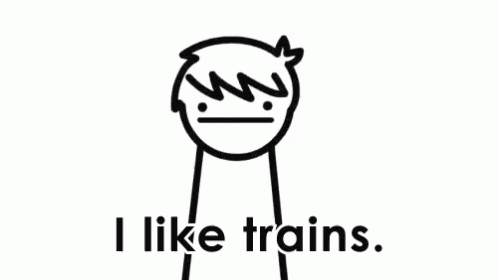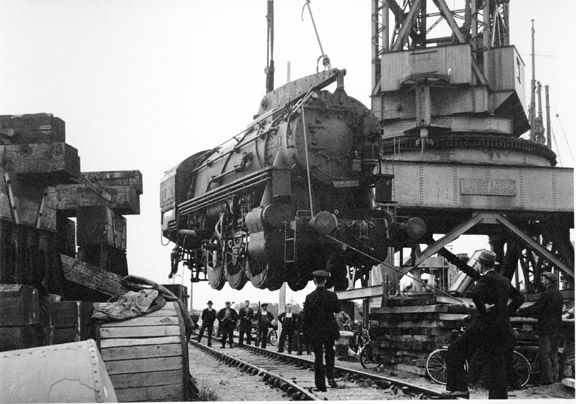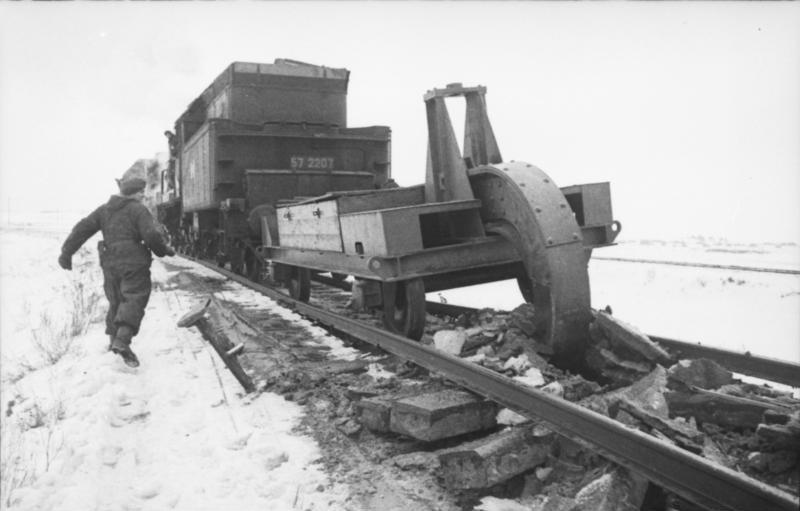Greetings, and welcome back for our last look at the supply system that ships with the Barbarossa update. As you all know, I’m British, and in Britain the trains never run on time - I couldn’t possibly break with this tradition, hence a completely intentional 10 minute delay on today’s diary.
There’ve been a couple of changes since we last looked at this, so you may find I’ll be reiterating a few aspects that we’ve already covered in previous diaries, albeit in some cases with a new twist.
Trains
As indicated in a previous diary, the logistics network that supplies your troops relies on the large-scale relocation of supply using trucks and trains.
Whereas trucks serve as an optional last-mile carrier for military supplies, trains make up the backbone of any logistics network that supplies an army which exceeds the local state supply available in its location.
The domestic production of trains is something that is unlocked via the technology tree. Many countries will start with the initial (civilian) train technology readily unlocked, however, there are several more options available to you as time progresses (more on this below!).

Your overall train need for the logistics network is derived from the overall supply usage of the nodes supplying your troops, and the distance factor that supply has to travel in order to reach them. In essence, the more troops you have drawing supply, the more trains you will need to keep supply running.
Needless to say, if fewer trains are provided than are required, supply output at point of demand will incur penalties proportional to the magnitude of the shortfall.
In one of our previous diaries, we alluded to a number of interactions that could be performed on supply nodes - one of these was a train priority setting. It transpired that this did not fit well with the underlying simulation, and we’ve removed this setting from nodes.
Logistics Strike
Of course, a freight-train loaded with supply makes a juicy target for the enemy. In NSB, CAS and bombers are able to perform the new logistics strike mission, which can put a severe strain on an enemy’s ability to supply their network - actively destroying trains and trucks, as well as damaging railways in the target area.
The strategic bombing air mission will also target rail and supply infrastructure, however the logistics strike mission is a much more effective way of neutralizing an enemy’s fighting capabilities while retaining important industrial infrastructure if you intend to occupy an area for any period of time.

Train Variants
As mentioned above, trains will be a researchable technology with several variants. Trains, unlike regular units, are not controllable - their movement and behaviour is entirely simulated based on the needs of your logistics flow. This said, there are several important statistical aspects to them.

To begin with, most of your network is likely to be populated by civilian trains. You can construct more of these by co-opting military factories. Further on in your campaign, you can unlock a variant of the civilian train with a significantly reduced construction cost.
To combat the strategic mission mentioned above, there is one (or..is it more?) further item in your toolbox for owners of the NSB expansion. Armored trains, while coming with a higher price tag, are much more resistant to destruction from air missions, and can act as an effective deterrent against logistics disruption.
Train enthusiasts (we have none of those here, right?) will note that the trains displayed above belong to the soviet union - there is indeed unique art as well as 3d models for several other major nations.




A highly camouflaged train in action.

Displayed trains are based on your stockpiled train equipment. This is the german armoured locomotive!
That’s all from me for today - I’ll hand over here to @YaBoy_Bobby to go over some of the details on supply distribution at a hub level:
Hub to Province Supply Distribution
We have talked about how trains and rails feed the supply hubs, but not so much about how hubs feed divisions in the field. As hubs are fed from the capital province by a rail network, divisions are fed by hubs over land.
Every Hub has an overland range that gives it a collection of provinces that it touches. This range is constant, but the cost of moving over each province is impacted by things like weather, terrain, rivers, and infrastructure. Motorization decreases the penalty for crossing each province, thus increasing the number of provinces a hub will touch and potentially creating greater hub density and thus greater overall supply in an area.

As has been alluded to with the phrase “hub density,” a province may be touched by multiple hubs. When multiple hubs touch a province, a ratio is created to determine what percentage of the supply requested each hub is responsible for. Every hub that touches a province lessens the supply burden of other hubs also touching the province.
In the final step, Divisions draw supply from hubs, depending upon the relationship between their current province and the hubs that touch that province. When a hub does not have enough supply to meet demands, the lack of supply is distributed evenly across all divisions currently drawing from the hub.
In older DDs we talked about a penalty to the amount of supply delivered to a province based upon weather, terrain, and distance. Over the summer we decided to remove this penalty as we found it compounded in a hard to predict way that created bad supply and sometimes penalized having more hubs touching a province in a way that we did not like.
There’ve been a couple of changes since we last looked at this, so you may find I’ll be reiterating a few aspects that we’ve already covered in previous diaries, albeit in some cases with a new twist.
Trains
As indicated in a previous diary, the logistics network that supplies your troops relies on the large-scale relocation of supply using trucks and trains.
Whereas trucks serve as an optional last-mile carrier for military supplies, trains make up the backbone of any logistics network that supplies an army which exceeds the local state supply available in its location.
The domestic production of trains is something that is unlocked via the technology tree. Many countries will start with the initial (civilian) train technology readily unlocked, however, there are several more options available to you as time progresses (more on this below!).

Your overall train need for the logistics network is derived from the overall supply usage of the nodes supplying your troops, and the distance factor that supply has to travel in order to reach them. In essence, the more troops you have drawing supply, the more trains you will need to keep supply running.
Needless to say, if fewer trains are provided than are required, supply output at point of demand will incur penalties proportional to the magnitude of the shortfall.
In one of our previous diaries, we alluded to a number of interactions that could be performed on supply nodes - one of these was a train priority setting. It transpired that this did not fit well with the underlying simulation, and we’ve removed this setting from nodes.
Logistics Strike
Of course, a freight-train loaded with supply makes a juicy target for the enemy. In NSB, CAS and bombers are able to perform the new logistics strike mission, which can put a severe strain on an enemy’s ability to supply their network - actively destroying trains and trucks, as well as damaging railways in the target area.
The strategic bombing air mission will also target rail and supply infrastructure, however the logistics strike mission is a much more effective way of neutralizing an enemy’s fighting capabilities while retaining important industrial infrastructure if you intend to occupy an area for any period of time.

Train Variants
As mentioned above, trains will be a researchable technology with several variants. Trains, unlike regular units, are not controllable - their movement and behaviour is entirely simulated based on the needs of your logistics flow. This said, there are several important statistical aspects to them.

To begin with, most of your network is likely to be populated by civilian trains. You can construct more of these by co-opting military factories. Further on in your campaign, you can unlock a variant of the civilian train with a significantly reduced construction cost.
To combat the strategic mission mentioned above, there is one (or..is it more?) further item in your toolbox for owners of the NSB expansion. Armored trains, while coming with a higher price tag, are much more resistant to destruction from air missions, and can act as an effective deterrent against logistics disruption.
Train enthusiasts (we have none of those here, right?) will note that the trains displayed above belong to the soviet union - there is indeed unique art as well as 3d models for several other major nations.




A highly camouflaged train in action.

Displayed trains are based on your stockpiled train equipment. This is the german armoured locomotive!
That’s all from me for today - I’ll hand over here to @YaBoy_Bobby to go over some of the details on supply distribution at a hub level:
Hub to Province Supply Distribution
We have talked about how trains and rails feed the supply hubs, but not so much about how hubs feed divisions in the field. As hubs are fed from the capital province by a rail network, divisions are fed by hubs over land.
Every Hub has an overland range that gives it a collection of provinces that it touches. This range is constant, but the cost of moving over each province is impacted by things like weather, terrain, rivers, and infrastructure. Motorization decreases the penalty for crossing each province, thus increasing the number of provinces a hub will touch and potentially creating greater hub density and thus greater overall supply in an area.

As has been alluded to with the phrase “hub density,” a province may be touched by multiple hubs. When multiple hubs touch a province, a ratio is created to determine what percentage of the supply requested each hub is responsible for. Every hub that touches a province lessens the supply burden of other hubs also touching the province.
In the final step, Divisions draw supply from hubs, depending upon the relationship between their current province and the hubs that touch that province. When a hub does not have enough supply to meet demands, the lack of supply is distributed evenly across all divisions currently drawing from the hub.
In older DDs we talked about a penalty to the amount of supply delivered to a province based upon weather, terrain, and distance. Over the summer we decided to remove this penalty as we found it compounded in a hard to predict way that created bad supply and sometimes penalized having more hubs touching a province in a way that we did not like.






